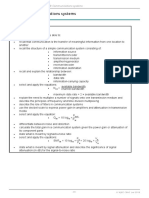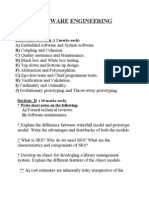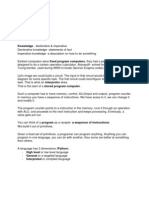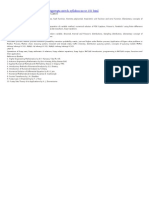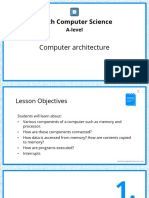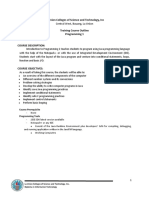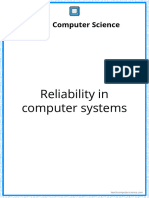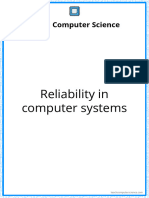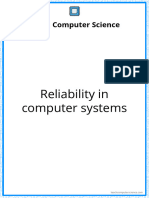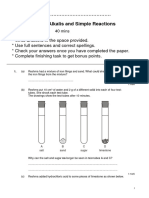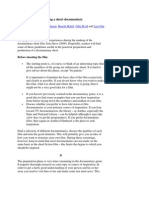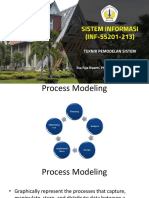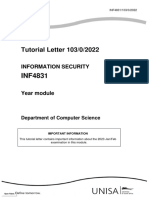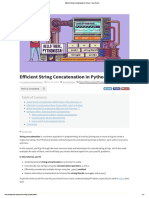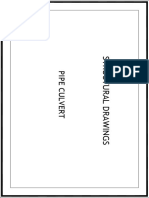0% found this document useful (0 votes)
91 views24 pagesPresentation - 02 Reliability in Computer Systems
This document discusses reliability in computer systems. It defines reliability and outlines things that can cause systems to fail, such as hardware issues, software bugs, human error, and natural disasters. It also describes critical systems and different types, including safety-critical, mission-critical, business-critical, and security-critical systems. Methods to improve reliability like backups, redundancy, fault tolerance, and defensive programming are explained.
Uploaded by
victorwu.ukCopyright
© © All Rights Reserved
We take content rights seriously. If you suspect this is your content, claim it here.
Available Formats
Download as PPTX, PDF, TXT or read online on Scribd
0% found this document useful (0 votes)
91 views24 pagesPresentation - 02 Reliability in Computer Systems
This document discusses reliability in computer systems. It defines reliability and outlines things that can cause systems to fail, such as hardware issues, software bugs, human error, and natural disasters. It also describes critical systems and different types, including safety-critical, mission-critical, business-critical, and security-critical systems. Methods to improve reliability like backups, redundancy, fault tolerance, and defensive programming are explained.
Uploaded by
victorwu.ukCopyright
© © All Rights Reserved
We take content rights seriously. If you suspect this is your content, claim it here.
Available Formats
Download as PPTX, PDF, TXT or read online on Scribd
/ 24


